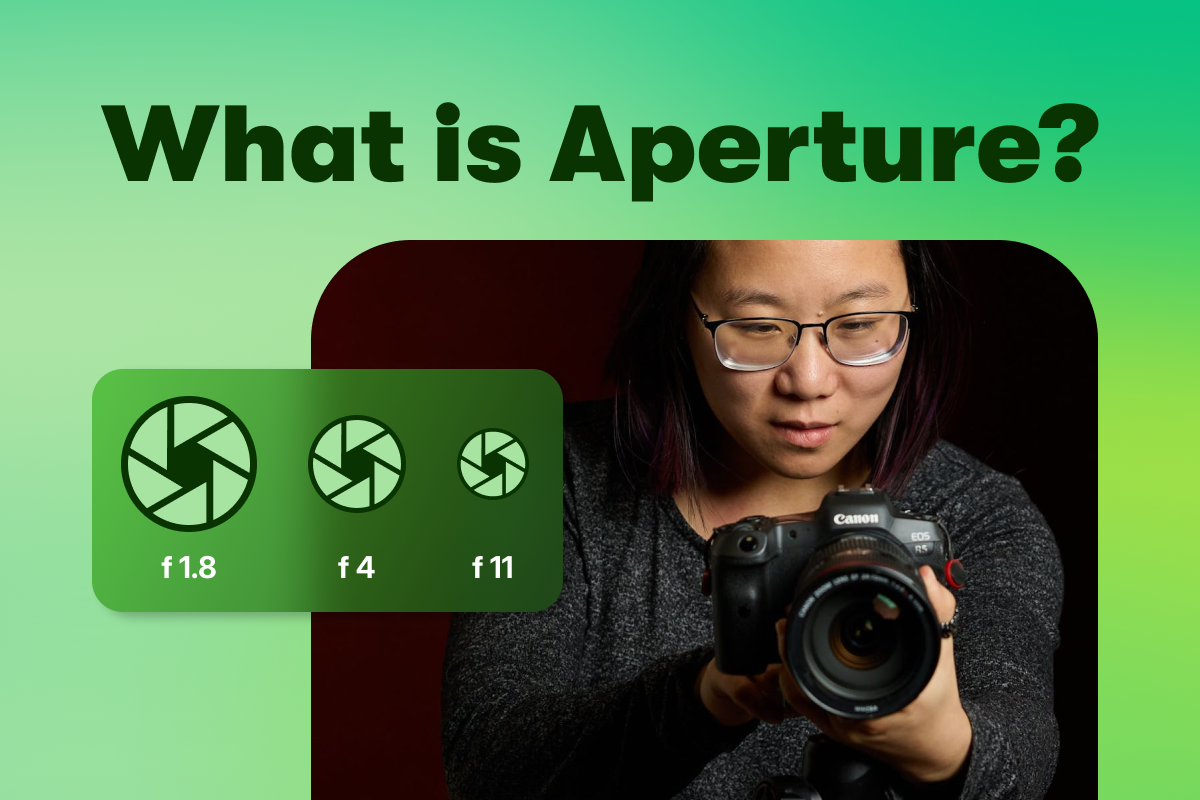What Is an Aperture on a Camera?
Learn more about apertures and how to pick the best one for your shot.
July 30, 2025
Topic tags

In optics, an aperture is an opening that lets light through. Think of it like your eyes: When you squint, less light enters, and when your eyes are wide open, more light comes in.
On a camera, the aperture is a hole in the lens that controls how much light reaches the sensor.
How apertures are measured
They’re measured in f-numbers (also known as f-stops), like f/1.4, f/2.8, or f/16. These numbers are fractions that compare the lens’s focal length to the diameter of the opening. That’s why:
- A lower f-number means a wider aperture (more light)
- A higher f-number means a narrower aperture (less light)
How the aperture affects your shot
Whether you’re taking a photo or shooting a video, the aperture plays a big role in how your shot looks. It affects how bright the image is and how much of it is in focus. That’s why picking the right aperture matters.
- Use a lower aperture (like f/1.8) for low light or to create a shallow depth of field — where your subject is sharp and the background is blurred. This gives your video a more cinematic look.
- Use a higher aperture (like f/16) when you want everything in focus, such as landscapes or group shots.
What’s the best aperture to use?
There’s no one-size-fits-all answer. It all depends on your lens, lighting, and what you’re shooting.
While lower apertures are often associated with “better” lenses (like f/1.2 or f/1.4 on a 50mm prime), the best aperture is simply the one that gives you the look you want.
Every lens behaves differently:
- Prime lenses (like 24mm, 35mm, 50mm) can go down to f/1.2 or f/1.4
- Zoom lenses may have a fixed aperture (like 24–70mm f/2.8) or variable aperture (like 18–55mm f/3.5–5.6)
With variable aperture lenses, zooming in often results in a higher f-stop (smaller opening), which reduces light.
How to adjust the aperture on your camera
It’s simple! Most cameras, including iPhone cameras, show your f-stop digitally on the screen or in the settings menu.
You can usually change it with your camera’s jog wheel or touchscreen. If you’re stuck, check your camera’s manual.
Tips and best practices
Blur the background if it’s not important
If your background is messy or distracting, use a lower aperture to blur it. This keeps the focus on your subject.
Use a lower aperture when shooting portraits
A lower aperture like f/1.8 creates that soft, cinematic background blur. Just be careful with the focus. At lower f-stops, even the subject’s nose and eyes can fall in or out of focus.
Use a higher aperture when shooting landscapes
A higher aperture like f/16 keeps everything from the foreground to the background crisp.
Keep experimenting
Still not sure which aperture to use? Try them all!
Take test shots at different f-stops and see which look you prefer. DSLRs and mirrorless cameras give you instant feedback, so don’t be afraid to experiment.
- Filming a fast-moving subject like a runner or a playful pet? Try a higher aperture to make sure they stay in focus.
- Got a still subject like a sleeping baby or a product? Use a lower aperture for a dreamy, blurred background.






